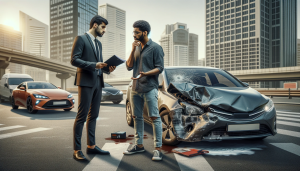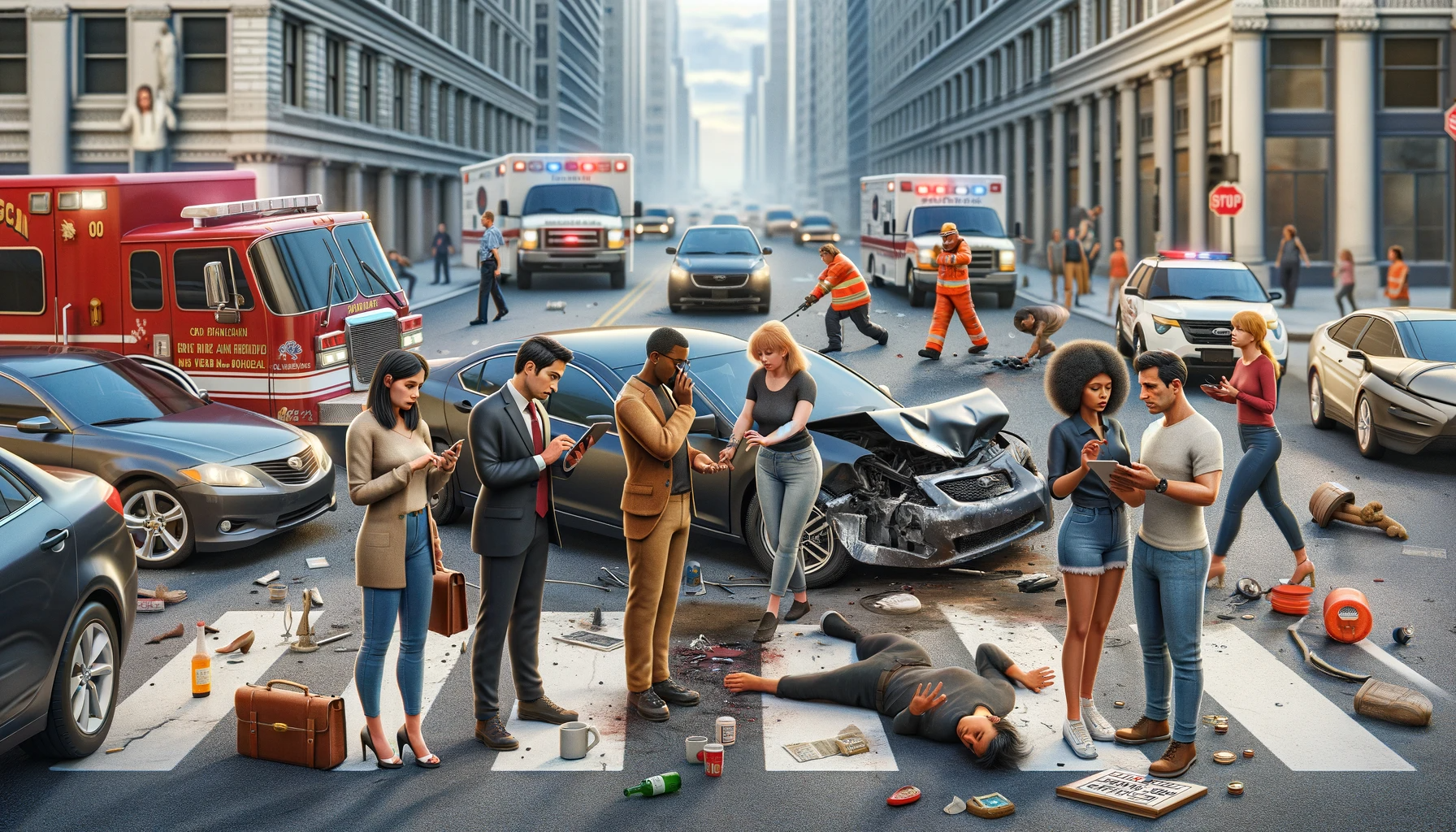Pedestrian accidents are unfortunately common and often lead to serious injuries or fatalities. When a pedestrian is struck by a vehicle, the legal landscape becomes intricate, encompassing various factors like liability, insurance disputes, and potential compensation. This article provides a comprehensive guide to navigating the legal resources available for pedestrian
accident cases, ensuring that victims and their families have a clear understanding of their rights and available options.
Introduction to Pedestrian Accidents
Pedestrian accidents involving motor vehicles can occur in a wide range of settings, such as intersections, parking lots, residential streets, and even on sidewalks. These incidents are frequently a result of driver negligence, unsafe road conditions, or the pedestrian’s lack of attentiveness. Understanding the context and root cause of the accident is crucial for determining who is legally responsible and identifying the best course of legal action.

Common Causes of Pedestrian Accidents
Pedestrian accidents usually arise from a variety of contributing factors, including:
- Distracted Driving: Drivers using cell phones, adjusting radios, or eating while driving are more prone to missing pedestrians on the road.
- Speeding: Higher speeds increase the severity of injuries and reduce a driver’s reaction time, making it difficult to stop in time.
- Failure to Yield: Many accidents occur when drivers fail to yield to pedestrians at crosswalks or intersections.
- Impaired Driving: Alcohol or drug impairment significantly increases the risk of collisions.
- Poor Visibility: Accidents are more likely to happen during nighttime or in adverse weather conditions, reducing visibility for both drivers and pedestrians.
In some scenarios, pedestrians might also share partial responsibility due to behaviors such as jaywalking, crossing streets against traffic lights, or being distracted by electronic devices.
Importance of Legal Resources for Victims
Legal resources are essential for victims of pedestrian
accidents, as they help in managing the complexities that follow such incidents. From addressing medical expenses and rehabilitation costs to filing insurance claims and determining liability, a knowledgeable legal approach can profoundly impact the victim’s ability to secure fair compensation and justice. Without proper guidance, victims may find themselves navigating a confusing legal system, which can hinder their chances of obtaining a favorable outcome.
Who is Liable in a Pedestrian Accident?
Liability in pedestrian accidents can be complicated. It is not always the driver who is solely responsible. The circumstances of the accident, including the actions of the pedestrian and any contributing external factors, must be carefully evaluated to determine liability. For instance, a pedestrian who crosses outside a marked crosswalk or a driver who speeds through a residential area may both bear partial fault. In some cases, third parties like construction companies (if roadwork created unsafe conditions) or municipalities (for poorly maintained sidewalks or intersections) could also be held accountable.
Determining Fault in Pedestrian Accident Cases
Determining fault in pedestrian accidents requires a thorough investigation of all evidence, which might include:
- Traffic Camera Footage: Cameras at intersections can capture the moment of impact and help establish whether traffic laws were violated.
- Eyewitness Testimonies: Statements from people who saw the accident unfold can provide crucial perspectives on who was at fault.
- Police Reports: These reports often contain the initial findings of law enforcement, which can influence the legal proceedings.
- Accident Reconstruction Experts: In complex cases, specialists may recreate the accident scene to analyze factors such as speed, visibility, and the position of the parties involved.
An experienced attorney can assist in collecting and interpreting this evidence to identify the responsible party, which is crucial for building a strong case.
The Role of Drivers and Pedestrians in Preventing Accidents
Both drivers and pedestrians have specific responsibilities to minimize the risk of accidents:
- Drivers’ Duties: Drivers are legally obligated to exercise caution, particularly in areas with high pedestrian traffic such as school zones, residential neighborhoods, and crosswalks. They must yield to pedestrians, adhere to speed limits, and avoid distractions.
- Pedestrians’ Duties: Pedestrians should always use crosswalks, obey traffic signals, and avoid sudden movements into traffic. Walking while distracted, such as using a cell phone or wearing headphones, can increase the risk of accidents.
Understanding these responsibilities is important when determining liability, as failure to adhere to these duties can shift fault in an
accident.
Legal Rights of Pedestrian Accident Victims
Pedestrian accident victims have specific legal rights that protect them against being unjustly treated by insurance companies or the at-fault driver. Knowing these rights is the first step toward securing compensation that covers their losses, including:
- Medical Expenses: Immediate and long-term medical costs such as surgery, physical therapy, and prescription medications.
- Lost Wages: Compensation for income lost due to time taken off work for recovery.
- Pain and Suffering: Non-economic damages that account for emotional distress, trauma, and diminished quality of life.
- Wrongful Death Claims: In fatal pedestrian accidents, surviving family members may pursue compensation for funeral costs and loss of companionship.
Pedestrian Rights on the Road
Pedestrians generally have the right of way in designated crosswalks and at intersections. However, they must also follow traffic laws, such as obeying pedestrian signals and not stepping into traffic unexpectedly. Drivers must yield to pedestrians when they are lawfully crossing the street, but pedestrians have a duty not to act recklessly by walking into a vehicle’s path.
Compensation for Injuries and Damages
Victims of pedestrian
accidents can seek compensation for a broad range of damages. This may include:
- Medical Bills: Covers emergency care, surgeries, hospital stays, rehabilitation, and any future medical treatment related to the accident.
- Lost Income: Reimbursement for current and future wages lost due to injuries.
- Property Damage: Reimbursement for personal property damaged in the accident, such as electronics or personal items.
- Emotional Distress: Compensation for psychological impact, such as anxiety, depression, and post-traumatic stress disorder (PTSD).
- Punitive Damages: In cases of extreme negligence or recklessness, the court may award additional compensation to punish the at-fault party and deter similar behavior in the future.
Common Injuries in Pedestrian Accidents
Pedestrian
accidents often result in severe injuries due to the lack of protection pedestrians have compared to vehicle occupants. Some of the most common injuries include:
- Fractures and Broken Bones: Typically occur in the legs, arms, or ribs.
- Head Trauma and Traumatic Brain Injuries (TBI): Can result in long-term cognitive and physical impairments.
- Spinal Cord Injuries: May lead to partial or complete paralysis.
- Internal Bleeding and Organ Damage: Often difficult to detect and can be life-threatening.
- Cuts, Bruises, and Lacerations: While sometimes minor, these injuries can lead to significant scarring and disfigurement.
Physical and Emotional Impact
Pedestrian
accidents can result in a broad spectrum of physical and emotional injuries, significantly altering the quality of life for victims. Physically, these injuries may include broken bones, spinal cord damage, traumatic brain injuries (TBI), and internal organ damage. The recovery process is often lengthy and may involve surgeries, extensive rehabilitation, and ongoing medical treatments.
Beyond physical injuries, the emotional impact can be equally, if not more, debilitating. Many victims develop Post-Traumatic Stress Disorder (PTSD), anxiety disorders, depression, and even phobias related to crossing streets or being near traffic. These psychological effects can hinder daily functioning and require long-term therapy or psychiatric care. The emotional burden can also strain relationships, affecting not only the victim but their families and loved ones.
It is critical to address both the physical and emotional impacts when calculating compensation, as emotional suffering can greatly influence a victim’s ability to return to normalcy.
Long-term Medical Implications
The long-term medical implications of pedestrian
accidents can be severe and life-altering. Injuries such as traumatic brain injuries or spinal cord damage may result in permanent disabilities, limiting a person’s mobility and independence. Victims might require assistive devices like wheelchairs or walkers, home modifications, or live-in care, which can be financially and emotionally taxing.
For individuals who suffer from chronic pain or neurological issues as a result of the
accident, daily activities that were once simple, like getting dressed or driving, can become challenging or impossible. Additionally, a pedestrian accident victim may experience a diminished capacity to work, impacting their earning potential and necessitating a calculation of future lost income in any compensation claims.
Because of these complexities, it is vital to consider future medical expenses and lifestyle adjustments when negotiating a settlement. This includes costs for physical therapy, specialized treatments, psychological support, and any necessary long-term care.
Steps to Take After a Pedestrian Accident
If you or a loved one has been involved in a pedestrian accident, taking immediate and appropriate steps can significantly impact the success of any future legal claims. The aftermath of an accident can be chaotic, but staying focused and following these steps can help protect your rights.
Immediate Actions for Pedestrians
- Seek Medical Attention: Even if you feel fine initially, seek medical attention as some injuries may not show symptoms right away. Internal bleeding, concussions, and spinal injuries can be hidden but severe.
- Call the Police: Ensure that the accident is reported to the police and that an official accident report is filed. This documentation can serve as crucial evidence in legal proceedings.
- Do Not Admit Fault: Avoid making any statements that could be interpreted as admitting fault, even if you feel partially responsible. Such statements can negatively impact your claim later.
- Document Everything: Write down your account of what happened as soon as possible, while your memory is fresh. Include details such as weather conditions, road conditions, and the behavior of the driver before the accident.
Gathering Evidence and Witness Information
Having strong evidence can make or break a pedestrian
accident case. Collect as much information as possible, including:
- Photographs and Videos: Take clear photos of the accident scene, vehicle damage, road conditions, traffic signs, and any visible injuries. Videos can be even more compelling, especially if they capture the driver’s actions or other relevant factors.
- Witness Contact Information: Get the names, phone numbers, and addresses of anyone who saw the accident. Their testimonies can corroborate your account and counter any false claims made by the driver.
- Driver’s Information: Exchange contact information, insurance details, and driver’s license numbers with the involved driver. If the driver is uncooperative or tries to leave, report it immediately to the police.
Legal Options for Pedestrian Accident Victims
Victims of pedestrian
accidents have several legal options to pursue compensation depending on the circumstances of the incident and the severity of their injuries. Consulting with a legal professional can help determine the best course of action.

A
personal injury claim is the most common legal avenue for victims seeking compensation for medical expenses, rehabilitation costs, lost wages, pain, and suffering. A successful claim requires proving that the driver was negligent and that this negligence directly caused the
accident and resulting injuries.
- Establishing Negligence: Negligence is often established by showing that the driver violated traffic laws, was distracted, or failed to yield to the pedestrian’s right of way.
- Damages Covered: Compensation can include both economic damages (medical bills, lost wages) and non-economic damages (emotional distress, loss of enjoyment of life).
Pursuing a Wrongful Death Claim
If a pedestrian accident results in a fatality, the victim’s family can file a wrongful death claim. This type of claim allows the family to seek compensation for:
- Funeral and Burial Expenses: Reimbursement for the costs associated with the victim’s burial.
- Loss of Financial Support: Compensation for the income the victim would have provided if they had survived.
- Loss of Companionship: Monetary compensation for the emotional void left by the victim’s death.
Working with a Pedestrian Accident Attorney
Navigating the complexities of pedestrian accident cases can be challenging without professional assistance. Hiring an experienced pedestrian accident attorney can help victims and their families understand their rights, explore their legal options, and build a strong case for maximum compensation.
Why Hire a Specialized Attorney?
An attorney who specializes in pedestrian accidents has a deep understanding of the unique challenges these cases present, such as:
- Determining Liability: Pedestrian accidents often involve multiple parties, including drivers, municipalities, and even the pedestrian themselves. An experienced attorney can untangle these complexities and establish clear liability.
- Negotiating with Insurance Companies: Insurance companies often try to minimize payouts or shift blame. A specialized attorney knows how to counter these tactics and advocate for a fair settlement.
- Building a Strong Case: From gathering compelling evidence to enlisting expert witnesses, a skilled attorney can bolster your case and increase the chances of a favorable outcome.
Questions to Ask During a Consultation
When choosing an attorney, it’s important to ask specific questions to gauge their experience and approach:
- What is Your Experience with Pedestrian Accident Cases?: Look for attorneys with a strong track record of handling similar cases.
- What is Your Success Rate?: Understanding their past results can give you an idea of what to expect.
- How Will You Approach My Case?: Discuss the attorney’s strategy for proving liability and obtaining compensation.
- What Are the Potential Challenges?: A good attorney should be able to outline any potential obstacles in your case and how they plan to overcome them.
- What is Your Fee Structure?: Make sure you understand the cost of legal representation and whether the attorney works on a contingency basis (i.e., only getting paid if you win the case).
Conclusion
Pedestrian
accidents can have life-altering consequences, affecting both the physical and emotional well-being of victims. Understanding your legal rights and options is the first step toward securing justice and fair compensation. By working with a specialized attorney and leveraging available legal resources, victims can navigate the complexities of their case more effectively, ensuring they receive the support and compensation they deserve.
Look for an attorney who has the right legal resources for your legal needs.
Contact us here on the
Warmuth Law website or through our hotline 888-517-9888.
Frequently Asked Questions (FAQ's)
1. What should I do if I’m hit by a car as a pedestrian?
Immediately seek medical help, report the incident to the police, and contact an attorney to discuss your legal options.
2. Can I still file a claim if I was partially at fault?
Yes, many states follow comparative negligence rules, allowing you to recover damages even if you share some responsibility.
3. How long do I have to file a pedestrian accident claim?
The time limit varies by state, but it’s generally between one and three years from the date of the
accident.
4. What compensation can I receive as a pedestrian accident victim?
You may be entitled to compensation for medical expenses, lost wages, pain and suffering, and other damages.
5. Do I need an attorney for a pedestrian accident case?
While not mandatory, hiring an attorney is highly recommended to ensure your rights are protected and you receive fair compensation.













